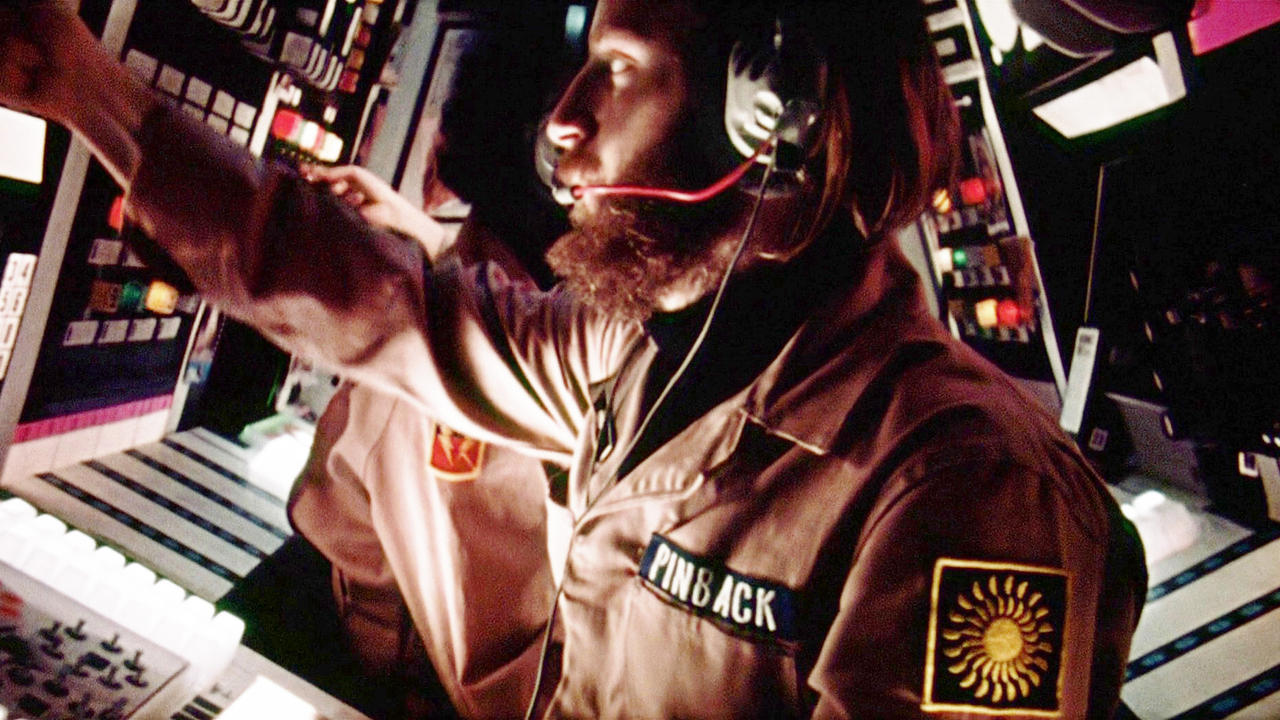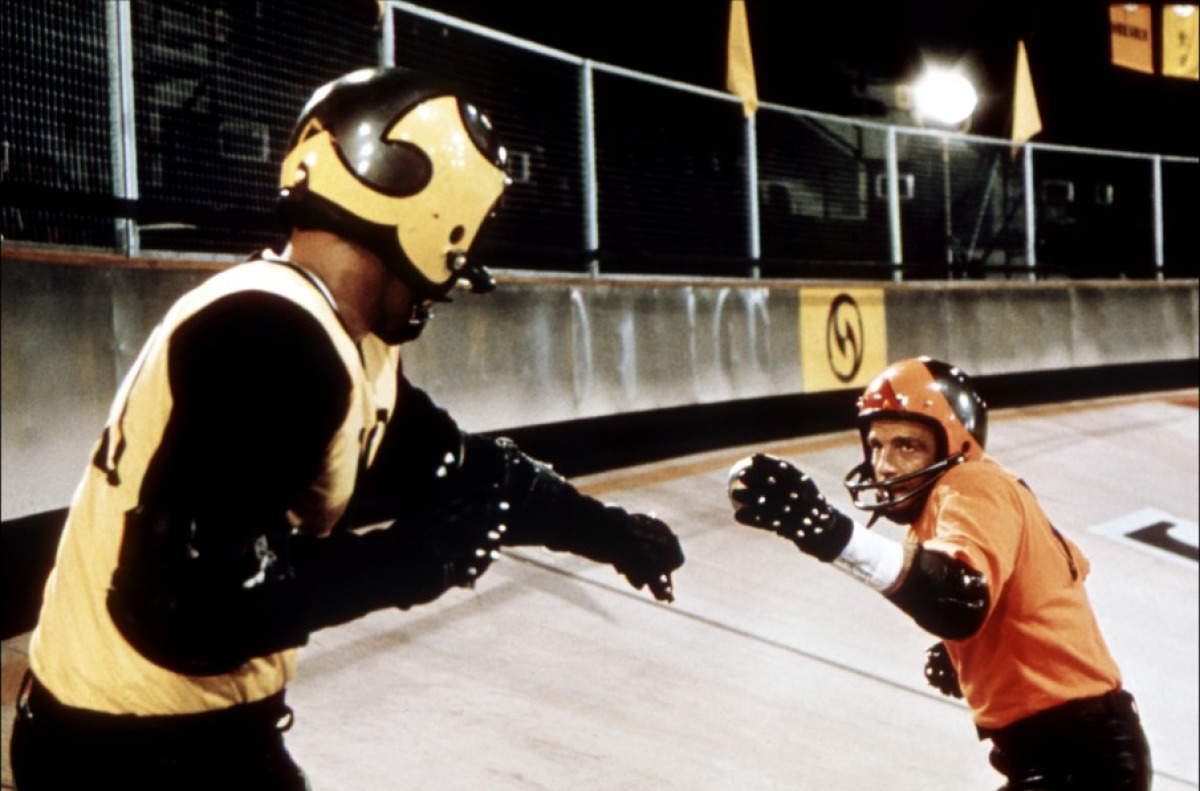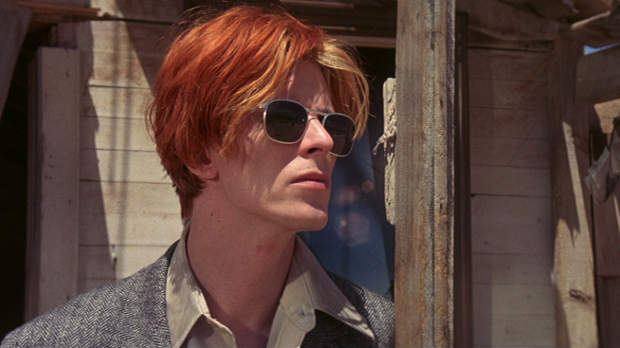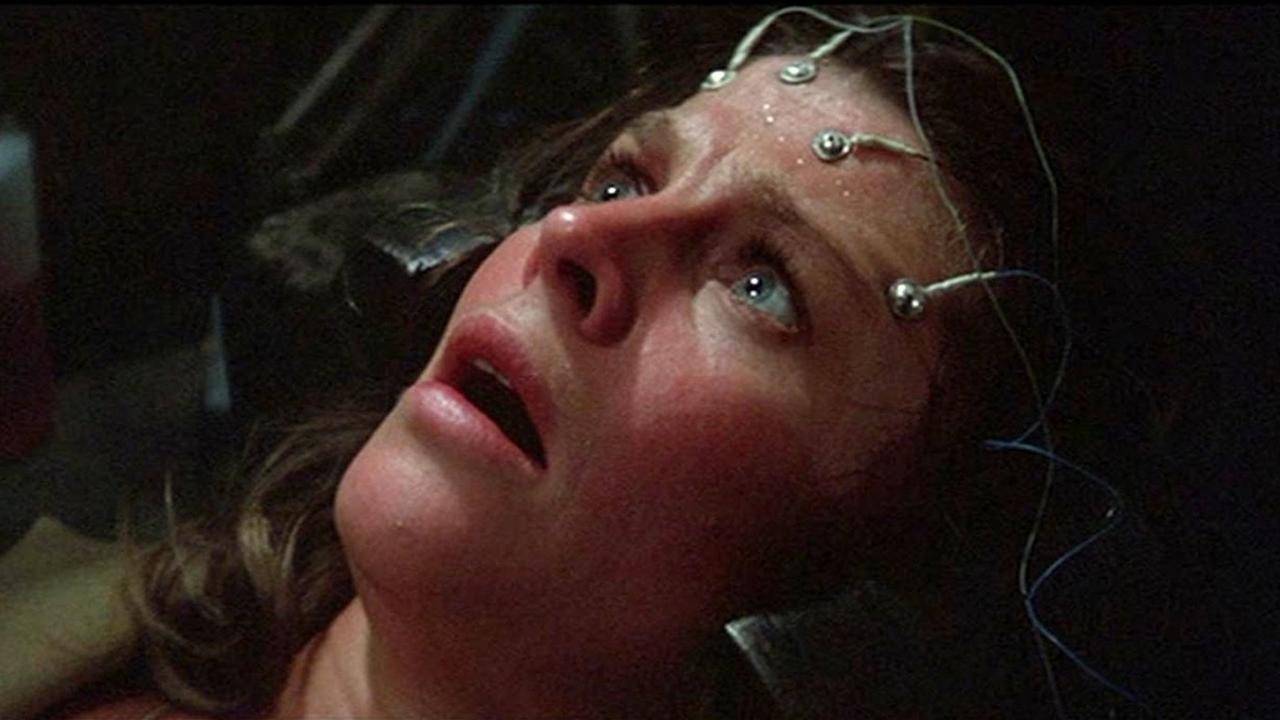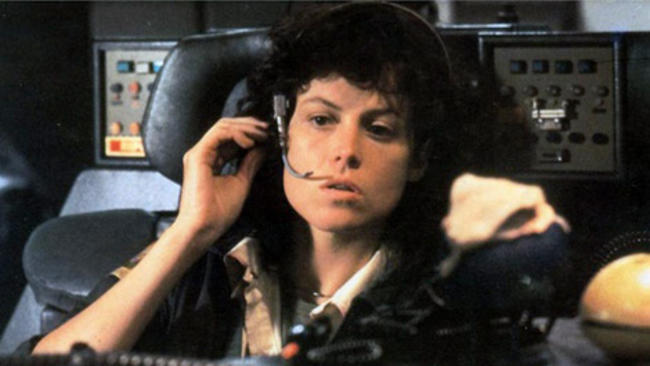6. Dark Star (1974)
1974 brings an eclectic group of films — Zardoz perhaps being the most interesting of the bunch. Loosely dystopian, a vanity project for John Boorman who was given the green light following the enormous success of Deliverance, it’s an odd film that can’t quite figure out what it wants to be. John Boorman is another Renaissance man who writes, directs, and produces.
Not really an auteur, he does make some very personal films from time to time that are very good. In addition to Zardoz, his best known films are Deliverance, Point Blank, Hell in the Pacific, Excalibur, The Emerald Forest, Beyond Rangoon, and Hope and Glory,which is especially good. Very few directors can get away with biopictures about themselves without seeming hugely egotistical and self-serving. Hope and Glory is, simply, glorious.
John Carpenter’s low-budget space opera — Dark Star — was made for less than $100,000. It quickly achieved cult status and is highly revered amongst its fanboys. Even the marketing campaign at the time conspicuously referenced 2001: a space odyssey — “The Spaced Out Odyssey” was written in large type on the poster.
While Carpenter’s career more or less with few exceptions stayed consciously schlocky, to his credit or detriment, depending on how you look at it, he preferred the low-budget auteur route that allowed him to keep his independence. Like Kubrick, he does it all — camera, editing, music, script, producer. There is something to admire in that.
Dark Star epitomized the low-budget filmmaking at its best and worst. You can say many things about the film, but lack of enthusiasm for its makers was not one of them. 40 years later, the film is still fondly remembered.
7. Rollerball (1975)
Dystopia and suburbia combine to rock 1975’s sci-fi set. Admittedly a weak year overall,The Stepford Wives and Rollerball combined more than make up for it.
Norman Jewison’s Rollerball is a very smart film and one of my personal favorites. The film is set in the near future where corporations, not governments, rule the world. War and greed is now a thing of the past.The game of Rollerball satisfies society’s thirst for blood sport. Jonathan E is a player of world renown. He is asked to retire. The reason is never stated directly to him (but revealed later to the audience.)
The rights of the individual vs. conformity to the state are pitted against each other (similar to A Clockwork Orange.)The game Rollerball was designed not only to satisfy society’s need for violence but also to demonstrate the futility of the individual in a collective. Jonathan E’s incredible skill at the sport has turned him into a hero to the masses, which goes against the will and philosophy of the state.
Jonathan E would be granted many special privileges and rewards — all his has to do is gracefully step down. He repeatedly refuses all requests. The corporation plots to take him out by eliminating more and more rules to the game thereby increasing the risk and danger to himself and his team. Jonathan E does not bow down knowing full well this could have dire consequences. Several of his friends die during the increasingly brutal games in deliberate attacks but still he does not yield.
By the last game it a fight to the death, all pretense for rules completely abandoned, a free-for-all. With no time limit in place, soon Jonathan E is the last man standing on his team. Two other opponents are left on the other side.The rink is littered with the bodies of the dead and injured. The game is not finished because at least one goal has to be scored and the opponent has the ball.Jonathan E stands in the way. Jonathan E has lost everything except his will to live and to be the Master of his destiny.
After a brief flurry of action, the two opponents are taken out and Jonathan E scores the only goal of the game. The arena hushed. A pin could drop and you would hear it. Jonathan starts to skate around the rink, slowly at first. A chant is heard — the crowd starts to chant his name, getting louder and louder. The Corporate heads are besides themselves with anger and anxiety — the individual has not only survived but thrived. As Jonathan skates around the rink with authority, the crowd level at its maximum, the picture freeze-frames on his defiant countenance.
It’s a brilliant, fascinating film and character study, made all the more compelling by James Caan’s fearless, committed performance, and John Houseman’s smooth operator corporate stooge who has to deal with Jonathan’s rise.
The action of the game is very intense and very realistic. Every effort was made to play the game for real. And much of the movie was filmed on location. In this manner, the film owes a lot to Kubrick’s A Clockwork Orange. The film also uses classical music extensively. Norman Jewison, the director, said this was clearly a result of the influence of 2001 — he didn’t want the music to “date” the film.
There is also a scene with a HAL-like, sentient computer while Jonathan E seeks to find answers. Jonathan E’s question (about the Corporate Wars and how decisions are made) throws the computer into a moral quandary, a paradoxical loop because, like HAL, it was designed not to answer certain questions but also be obedient to its masters. Brilliant film in every respect.
At all costs, stay away from the 2002 remake.
The Stepford Wives couldn’t be farther away from Rollerball — taking place in the snobby upscale communities of Connecticut one only reads about in John Cheever fiction. It turns the concept of Westworld on its ear. Here, the human wives of Stepford are being replaced one-by-one by perfect robot replicates.
After replacement, the wives, once feisty, argumentative, and bad homemakers are the picture-perfect postcard of perfect manners, perfect subservience, and perfect, permanent beauty. As with all movies where men play god, perfection turns to disaster.
At all costs, stay away from the 2004 remake.
8. The Man Who Fell to Earth (1976)
1976 was a very light year for science fiction, easily the least productive year of the decade. However, one film stood out.
Nicholas Roeg’s powerful, visually haunting film from the 1963 book of the same name by Walter Tevis made a memorable impression and wonderful addition to dystopian cinema. This is nothing new for Roeg, who is one of cinema’s master craftsmen and started out as a cinematographer first before becoming a director in his own right.
Heshotvisual stunners such as Walkabout (which he also directed), and Fahrenheit 451, and assisted camera in parts ofLawrence of Arabia and Doctor Zhivago. He was a born cameraman. As a director he could be hit or miss. The Man Who Fell to Earth definitely hit.
He has been saddled with similar criticism given to Kubrick — that he is all style and little substance. This may be partly true, but keep in mind filmmaking is also a visual medium, not always a reproduction of a three-act play. Some films strive to be different.
The Man Who Fell to Earth’s style owes more to A Clockwork Orange than 2001, but at its heart it’s still a story about sentient alien(s) — like 2001 — helping humanity out.It stars David Bowie, the pop-music icon in his first acting role, as the accidental interplanetary alien explorer.
2001 made sci-fi stylish and fashionable — almost an art form in and of itself. It’s very difficult to do well and most sci-fi films stop short of true, production-designed art. There are many reasons for this, not the least of which is time, budget, and directorial will. Roeg didn’t have much of a budget (compared to 2001) but he certainly had the will and the technical wherewithal.
What Roeg lacked in budget to create an otherworldly, time-out-of-place alien caught in our future shock country, he used his abilities as a cameraman, editor, and production designer to visualize this as a non-linear, temporal space opera filmed mostly on-location in a gritty kind of way that questions more than it answers.
It is surreal, elliptical, deliberately-paced, cerebral, and dystopian. It is heavy on characterization and light on special effects. Dialog is slangy, filmic, crisp. Not well received when first shown, it has grown in stature over time and now claims cult status.
9. Demon Seed (1977)
“Never was a woman violated as profanely… Never was a woman subject to inhuman love like this… Never was a woman prepared for a more perverse destiny…” indeed! MGM, who also produced this film and 2001 10 years earlier, clearly was trying to regain some of the magic. It’s a misfire, and a bad parody, but O, what a grand one.
Leo Goldsmith reviewed the film in Not Coming to a Theater Near You, and said it was “A combination of Kubrick’s 2001: A Space Odyssey and Polanski’s Rosemary’s Baby…” This description is apt.
The film features a sentient computer that seeks to grow beyond its mainframe and wants to procreate with the scientist’s wife to create a biological form of itself. The film features an A-list cast and big budget and it strives for much. The sordidness of the plot, the stylized acting by former A and B list actors, and a weak script prevented anyone from taking this film too seriously.
Some might call this genre sci-horror and you would be right, except it steals numerous elements of 2001 — the all-seeing computer, mechanisms to make drinks and turn on music, open doors like in the centrifuge, the voice of “Proteus” sounds too much like HAL, there’s a scene of programmers playing chess at a workstation, and there are a number Stargate-like fantasy sequences. Echoing Rosemary’s Baby, the union between woman and computer produces a child.
Derivative though this film may be, it bravely sought to expand the genre in an elevated style to differentiate itself from the double-feature, grindhouse cinema it really wanted to be.Of course, Star Wars and Close Encounters were such mega-hits that Demon Seed and Capricorn One(another personal favorite of mine) seemed like silly imitators and were all but forgotten in the fray. Watch them both if you can. Their fuzzy, 70s exuberance makes up for a lot.
10. Alien (1979)
Ridley Scott, one of cinemas greatest and most prolific craftsman and the man who would later call2001 a science fiction killer, directs one of the most significant sci-fi thrillers ever made. Mixing sci-fi with horror (like Demon Seed but at a significantly higher, big-budget level), and throwing in a human-looking android (as well as a computer bay like HAL’s inner core), and inventing the most nihilistic, evil, alien killing machine ever devised, this film broke significant new ground and was a major blockbuster smash hit of 1979, and became one of the highest grossing sci-fi films ever, along with Star Wars and Close Encounters.
The film spawned 3 more direct sequals and 1 prequal and a sequel to the prequal is on the way.It fulfilled the hopes and dreams of many studio executives far beyond its original expectation. Alien spawned many imitators in its own right.
The script was written by Dan O’Bannon, who had a hand in Dark Star years earlier.Most importantly, it featured an alien designed by H. R Geiger, a noted Swiss surrealist and illustrator. The film was gritty, realistic, lived-in. No attempt was made at Hollywood gloss.
The acting was realistic and honest and the scares, when they came, were upsetting and very, very bloody and excruciatingly tense. Most surprisingly, this was only Ridley Scott’s 2nd feature as a director (he had directed over 2000 TV spots, however.) The film launched his career into the stratosphere and the careers of many others as well. Not since 2001 — 11 years earlier — did a sci-fi film have this kind of impact on the world’s cinema screens.
The films visuals and themes borrow heavily from 2001 except in one detail — gone are the pristine interiors of the spacecraft Discovery. The Nostromo is a dirty, filthy, lived-in, commercial workhorse and the astronauts are not scientists but excavators.Other things like monitor screen reflecting on the actor’s faces, the believable reality and attention to detail of all the technical gear and control rooms, the computer bay of “Mother,” the film’s version of HAL, bathed in a warm amber hue rather than blood red, the sound design — all paid homage to 2001.
In this film’s sequel, Aliens(1986), James Cameron paid direct homage to Kubrick by using Gayane’s Adagio from Aram Khachaturian’s Gayane ballet suite in exactly the same context — introducing the warship U.S.S. Sulaco elegantly moving in space in the same way Discovery was. Aliens was a huge megahit, doubling the worldwide take of the original and considered one of the best films of the genre.
